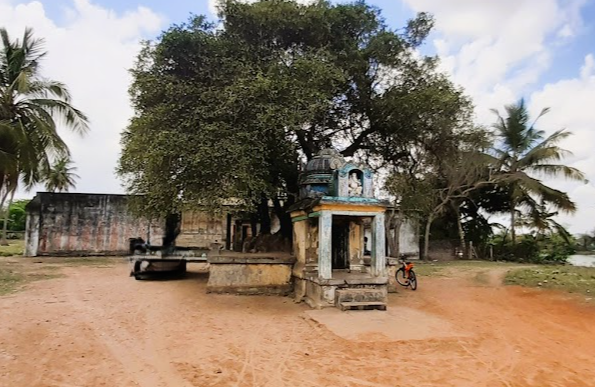Origin :-
The original temple is believed to have existed before the 7th century, with hymns sung by Thirugnanasambandar in praise of Lord Shiva. The temple was later reconstructed as a stone structure during the Chozha period, and it was further expanded by the Nayakas.
The temple contains inscriptions from various rulers, including Chozha Kings such as Madurai Konda Koparakesarivarmar, Rajakesarivarmar, Rajendra Chozha, and Thiribhuvana Chakravarthi Rajendra Chozha. Inscriptions also come from Pandya Kings, including Varaguna Pandya, Srivallabha alias Veera Panya, and Maravarman Sundara Pandyan. Additionally, Vijayanagara Kings like Venkatapathy Rayar contributed inscriptions to the temple.
The place was known as "Thiruchitremam" in 1459 CE and was located in “Rajarajavalanattu VettraRRu nattu Puntrirkootrathu.”
Lord Shiva was referred to by various names, including Thiruchitremamudayar, Pazhayavanaththambiranar, Pazhayavana Perumal, Pazhayavana Thambiranar, and Thiru(va)aathitha Eswaran Udayar.
An inscription from Kulothunga Chozha-III’s 35th reign year mentions endowments made by the Muppathu vattathu Brahmins, although the last portion of this inscription is unavailable.
An inscription from Rajendra Chozha-III’s 6th reign year records an endowment for a sandhi lamp. It mentions the distribution of gold coins to those working in the temple and references "Pittukku man sumantha,” linked to the "Thiruvilayadal purana," although this inscription is damaged.
Two fragments from the 12th century document endowments and donations, including land.
A damaged inscription from the 17th century, related to the Thanjavur Nayaks, mentions the endowment for burning a sandhi lamp, with 150 kasu given to Siva Brahmins.
An inscription from this period notes that 25 veli of land in Alangudi belonged to Thiruvaimur Thambiranar, although the inscription is currently unavailable.
An inscription on the temple mandapa pillar indicates that the pillar was gifted by Muthranraman alias Mudiyal puriyal, and additional gifts were made by the people of Inthiyur Sabha during the reign of Veera Pandya Devar.
A channel was excavated to bring water to the kulam/tank during the reign of Thiribhuvana Chakravarthy Rajarajadevar (II or III).
- Sthalapuranam 1 :
Sankaran Chettiar was a devoted follower of Lord Shiva. Before leaving town for work, he was unaware that his wife, Anbirpriyal, was pregnant. Anbirpriyal dedicated her time to cleaning the temple and preparing garlands for the deities.
During Sankaran's absence, the Lord provided for her by sending a gold coin every day at a nearby place called Ponnirai, earning Him the name "Pon-vaitha-nathar." However, as her due date approached, villagers began to doubt her chastity, noticing her newfound wealth.
In her distress, Anbirpriyal surrendered to Lord Shiva and Goddess Parvati. The Goddess Akhilandeswari assisted her during childbirth, ensuring a safe delivery. When Sankaran returned, the villagers voiced their suspicions, leading him to question his wife. She, however, steadfastly swore by the Lord as her witness.
To test her faith, Sankaran set four conditions:
- The closed doors of the temple would open on their own.
- The ardhajama puja would occur without anyone's intervention.
- The bali peetam would move forward after Nandi.
- The sthala vriksham (temple tree) growing behind the temple would shift to the front.
Anbirpriyal entrusted these matters to the Lord, who miraculously fulfilled each condition, dispelling any doubts in Sankaran's mind and the minds of the villagers.
- Sthalapuranam 2 :
Brahmarishi regularly conducted the ardhajama puja (the last puja of the day, held late in the evening) at the temple. One evening, he was delayed, and the temple doors were closed. To gain entry, the sage transformed into a bee and entered through a hole in the wall, accompanied by the other rishis who were with him.
Today, a beehive remains inside the garbhagriha, believed to be a symbol of these rishis who continue to worship the Lord.
